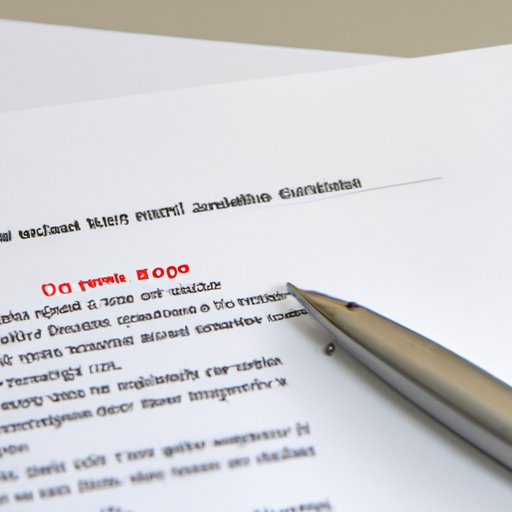
I. Introduction
Editing is an essential part of the writing process, yet it can be challenging even for the most experienced writers. The importance of editing cannot be overstated since it can make the difference between a mediocre piece and a successful one. In this article, we’ll discuss some tips and tools for efficient editing, self-editing, line editing, proofreading, and editing for clarity.
II. Tips for Efficient Editing
Editing can be overwhelming and time-consuming, but it’s essential to the writing process. To edit efficiently, it’s best to focus on one aspect at a time. Start with the overall structure, then move on to sentence structure, grammar, and spelling. Taking breaks and avoiding distractions can also help increase productivity. It’s essential to give yourself enough time to edit thoroughly. Rushing through the process can lead to careless errors.
III. The Art of Self-Editing
Self-editing is a crucial part of the writing process. It involves reviewing your work and making necessary changes before submitting it to an editor or publishing it. Some techniques for effective self-editing include reading out loud, using editing software, and sharing work with others. Editing software, such as Grammarly, can help identify grammar and spelling errors. Reading out loud can help you hear awkward phrasing or mistakes that you may not notice while reading silently. Sharing work with others can provide valuable feedback and help identify areas for improvement.
IV. A Guide to Line Editing
Line editing involves a more in-depth review of the writing. It focuses on improving the writing’s flow, clarity, and voice. Line editing differs from copyediting and proofreading, which focus on grammar and spelling. Elements of writing that line editing should focus on include word choice, sentence structure, and paragraph organization. Some tools that can aid in line editing include Hemingway Editor and ProWriting Aid.
V. The Importance of Proofreading
Proofreading is the final stage of editing. It involves reviewing the work for grammar, spelling, and formatting errors. Proofreading can be challenging because familiarity with the work can make it easy to overlook mistakes. To proofread effectively, it’s best to take one aspect at a time, such as grammar or spelling. Using checklists can also be helpful to ensure all elements are reviewed. Getting another set of eyes to review the work can provide valuable feedback that can improve the quality of the writing.
VI. Editing for Clarity and Conciseness
Clarity and conciseness are essential in writing, no matter the genre or audience. Simplifying language, cutting unnecessary words and phrases, and using clear sentence and paragraph structure can all improve clarity and conciseness. Clunky phrasing and overly complicated sentences can confuse readers. Additionally, using active voice instead of passive voice can simplify the language and improve the writing’s flow.
VII. Conclusion
Editing is a crucial part of the writing process that cannot be ignored. These tips and tools can aid in editing, self-editing, line editing, proofreading, and editing for clarity. Remember to take your time and review thoroughly to produce a polished final product. Employing these techniques can help improve your writing skills and produce effective and successful pieces of writing.





